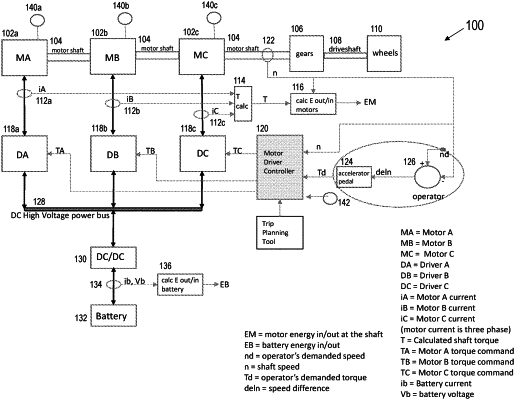| CPC B60L 15/2045 (2013.01) [B60K 1/02 (2013.01); B60L 7/10 (2013.01); G01C 21/3407 (2013.01); G01C 21/3453 (2013.01)] | 22 Claims |

|
1. A method for generating a customized multi-motor switching system having motors optimized for a desired performance criteria within one or more constraints, the method comprising:
receiving driving pattern data;
receiving as an input a number of motors (N) for the multi-motor system;
receiving motor information data from a database, wherein the motor information data includes operating characteristics for each of a plurality of motors, wherein the plurality of motors are electric motors, and wherein the plurality of motors comprises more than N motors;
performing for each combination of N motors within the plurality of motors an optimization analysis across all time periods in the driving pattern data, the optimization analysis comprising:
determining from the driving pattern data a shaft speed and torque across all time periods;
calculating, based on the motor information data, a cost function for the desired performance criteria across all time periods in the driving pattern data for each potential combination of torque contributions by the combination of N motors;
identifying, for each time period in the driving pattern data, from the potential combinations of torque contributions, a combination of torque contributions optimized for the desired performance criteria based on the cost function while remaining within the one or more constraints; and
providing a total value of the cost function for the combination of N motors over all time periods using the combinations of torque contributions optimized for the desired performance criteria; and
outputting an optimal combination of N motors for use in the multi-motor system, the optimal combination of N motors having a total value of the cost function that satisfies the desired performance criteria within the one or more constraints.
|